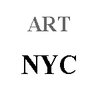So far, we've looked at the conditions for a great work of art. I also learned that it could be a great artwork only when it has all the workability, timeliness, and representation. It is also necessary to practice continuously substituting the work into the formula as if solving math application problems to find the seeds in advance. As explained earlier, collecting artwork requires a much higher level of experience and knowledge than the effort to appreciate art. Art appreciation and study focus on the work's work and historical value. Still, to become rich through art investment, it is possible to understand and understand more things such as market structure and flow, expert perspective, and public code.
Many people also misunderstand the investment of rich people in art. The first misunderstanding is, 'People who have a lot of money make money by investing in art or speculating.' People with a lot of money know the energy and power of money well. That's why I'm cautious. Art is more often thought of as a means of low hedging to not lose assets than as a means of investment. Therefore, in the case of works with a relatively low price range, collecting reflects one's taste as a means of entertainment. The data is also well presented in the annual Art Market Report published by Art Basel and UBS. But it's completely different in a market worth more than 1 billion won.
Artworks themselves function as money. Works that lack artistic value are not invested in because they are expensive or popular. This is because such results cannot continue to serve as currency. The second misconception is that substantial financial capitalists operate to invest in their favorite pieces and float them on the market, which may be somewhat true. However, what kind of work would be displayed like that? I spent a lot of money to raise the price to my heart's content, so shouldn't the price drop overnight? Does an artist know how much effort, time, and money it takes to make a work of art famous and raise prices? There is no such rich man as a douche to invest much effort and money in such a worthless piece of work as an empty shell. Sometimes, there are such cases, and after making rumors as if the operation's owner was floating, it was sold at a very high price at the auction house. In addition, exhibitions are held in areas with relatively low public confidence or in private art galleries. It's as if the quality of the work has been recognized. In addition, a large-scale individual exhibition is held in the gallery to justify the winning bid for the auction house. Collectors who do not understand art investment well mistake this as all about art. And I open my wallet quickly in operation. What will happen after that? Operational forces may even have borrowed money from banks as collateral for their work. However, where did the work disappear after about a decade or so? Its reputation and popularity must go down the drain. One tip is that this operation is impossible because it is costly. Therefore, the rich people do not get involved in these operations, and the clumsy people are mobilized or harmed. In addition, the forces of each war slip away when they take advantage.
As the saying goes, "Knowing is power," let's understand clearly and set rules to complete our excellent art collection portfolio!! Before the art collection, you can reduce mistakes by establishing a ratio by price range, era, and genre in advance.


